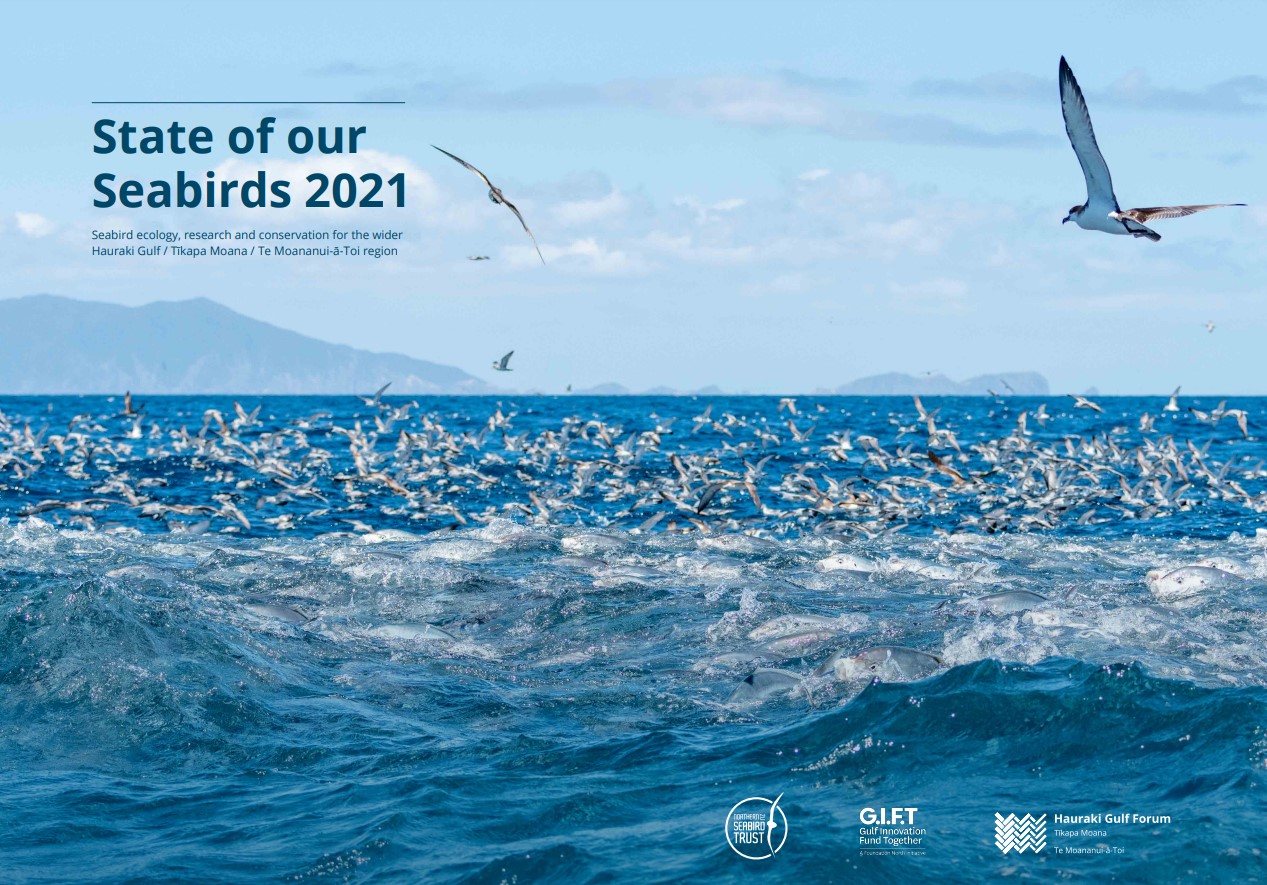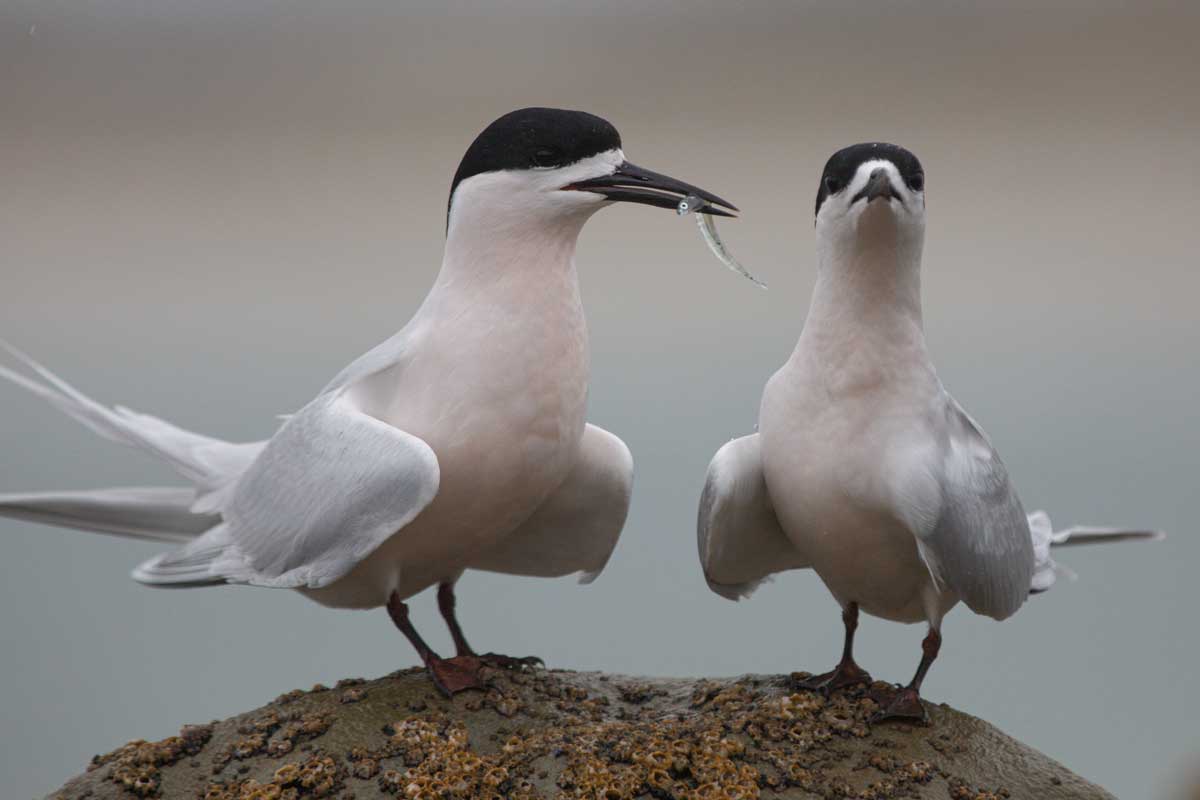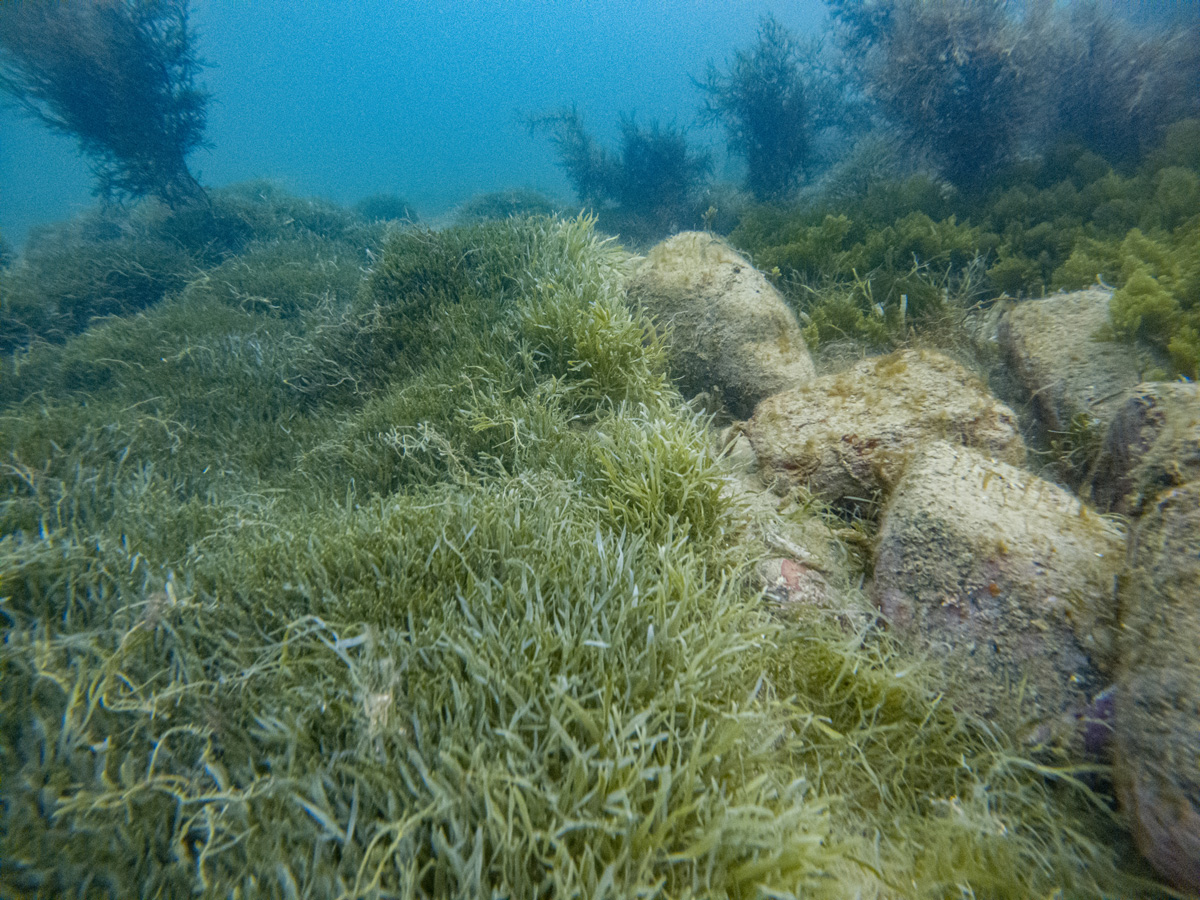The Te Moananui-ā-Toi / Tīkapa Moana / Hauraki Gulf is regarded as an international area of significance for many of New Zealand’s seabirds. This is due to the diversity and number of species that rely on the area to survive, including the endemic species that breed in the marine park and the wider region – the tākoketai / black petrel, tītī / Pycroft’s petrel, rako / Buller’s shearwater, New Zealand storm petrel and tara-iti / New Zealand fairy tern.
Research suggests that from the first settlement of the region in approximately 1350, seabird numbers in the Gulf ecosystem have declined by around 69%. Initially, the decline was driven by introduced predators (rats, mustelids, cats, dogs) and the exploitation of seabirds as a food source by humans. Since the 1950s the impact of commercial fishing has also had a major impact both directly and indirectly and an increase in human sprawl around the marine park has resulted in increased sedimentation and nutrient runoff. The introduction of novel viruses in the region, such as pilchard herpesvirus in 1995, has also had its effects felt.
Seabird protection started around the mid-20th century through the protection of nesting sites and creating pest free island reserves. This has helped to re-establish and increase populations of some pelagic and migratory seabird species such as petrels, shearwaters, diving petrels and storm petrels which rely on the Marine Park at certain times of the year. However, there are ongoing declines for other species that rely on the coastal/inshore habitats of the Marine Park for their year-round survival. These include terns, gulls, penguins and shags. The tara-iti / New Zealand fairy terns, for example, have only 39 individual birds remaining and now a huge amount of effort is going into their conservation and management.

The 2021 State of Our Seabirds Report by The Northern New Zealand Seabird Trust details the pressures the seabirds are facing but also champions their potential as sentinels for change in the marine environment. For example, an integrative approach to seabird biology can help realise the immense potential these species have as indicators of ocean change. The report addresses the current state of the region’s seabirds, highlights recent research as well as the conservation efforts being put into protecting these incredible beings.

“Seabirds embody the spirit of Mauri of our Gulf, seamlessly linking its waters and the land, riding the winds. By seeing our world through their eyes, we have the opportunity, and privilege, to bring these connections to the fore. As Mauri can be diminished, it can be restored. As our seabird taonga guided the first peoples across the Pacific to this land, Aotearoa, they can help guide us to a future where the Gulf’s health and our interconnected wellbeing are greatly enhanced by our actions.“ – State of our Seabirds Report 2021
The report includes a set of measures or indicators under the areas of kaitiakitanga, strategic planning, marine spatial planning, fisheries, coastal development, pollution, biosecurity, ecological surveys, sea bird restoration and species-specific. The intention is for these to be evaluated in five and ten years to understand the progress being made in our knowledge and understanding of seabirds and Te Moananui-ā-Toi / Tīkapa Moana / Hauraki Gulf.
The report is available in full and also in summary.





